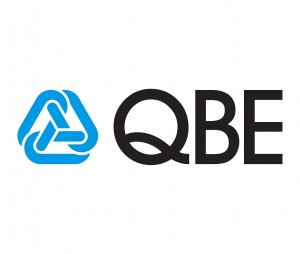

QBE’s restructuring over the last year has focused on exiting loss-making businesses and portfolios, while rigorously emphasizing  profitable underwriting across the group.
profitable underwriting across the group.
Good progress has been made — as demonstrated in the financials, along with strong premium rate increases, top line growth, improvements in the underlying quality of earnings and a strengthened balance sheet, according to Group Chief Executive Pat Regan.
Indeed, the numbers positively reflect QBE’s restructuring efforts. For the first six months of 2018, QBE reported a net profit of A$358 million ($263.4 million), compared to A$345 million ($253.8 million) in H1 2017. The combined ratio 95.8 percent also improved from last year’s 98.2 percent and its full year combined ratio of 104.8 percent.
“We have made significant progress in simplifying the business this year,” said Regan in an analysts’ call to discuss the financial results. He explained that the company has exited a number of countries and those portfolios that contributed to volatility and last year’s underwriting losses.
For the full year, the company reported a A$1.3 billion ($956.3 million) after-tax loss on “unprecedented” natural catastrophe claims.
Since January, when Regan became CEO, QBE has sold its Latin American operations to Zurich Insurance for $409 million, sold its underperforming business in Thailand and began exiting from North American personal lines. (This month, the company announced it sold its personal insurance independent agency policies in 47 states to Safeco Insurance, a division of Liberty Mutual. The deal was effective on Aug. 15.)
During the half, QBE also executed a loss portfolio transfer to exit its Hong Kong construction workers’ comp business.
Other actions taken include mobilization of the company’s Brilliant Basics program, which was first piloted in 2016 and rolled out across the company this year. The program aims to ensure high standards for underwriting, pricing and claims management across all countries and portfolios.
In addition, to address deterioration in performance, QBE implemented a comprehensive remediation plan covering specific actions for each of its business “cells.” These cell reviews began in the second half of 2016, continued throughout 2017 and into 2018.
Regan said the cell review process is now fully established across the group, with more than 300 cell reviews completed across the four divisions involving over 100 cells globally during the first half.
“We are now a more focused organization on the markets and on the profits where we can have scale and can deliver an acceptable return to our shareholders,” he said.
Wide-Ranging Rate Increases Have Helped
Regan noted he is pleased with rate increases the company has achieved across each of QBE’s major divisions, despite the extended period of declining rates globally. “We’ve achieved average rate increases across each of the three major divisions, coming in at 4.6 percent overall for the group. This isn’t just something that happens by accident,” he said.
“Our detailed portfolio analysis is designed really to target the right increase in the right segments, subsegments, and sub-subsegments, and down to policy level, to drive overall strong rate increases, increase our rate adequacy, and also keep strong retention levels.”
North America saw average premium rate increases of 3.1 percent, compared with only 0.9 percent in H1 2017, while Europe saw an overall rate increase of 4.8 percent, compared with a 1.1 percent average rate reduction in the same period last year, according to QBE’s H1 financial statement.
Further, pricing momentum remained strong in Australia and New Zealand, which saw average rate increases of 6.6 percent, compared with 5.0 percent in H1 2017. Indeed, Regan said QBE’s combined ratio of 95.8 percent reflects a strong result from its Australian and New Zealand business.
“Even in Asia, where market conditions remain very tough, the early benefits from our remediation program are becoming evident with more selective underwriting, exit from certain non-profitable lines of business, reducing retention as designed, but also starting to drive better growth in our rates there,” Regan said.
The level of price competition in QBE’s Asia Pacific operations “has abated somewhat with an average premium rate increase of 0.3 percent achieved, compared with a reduction of 3.9 percent in the prior period,” said the company’s H1 financial statement.
Although QBE has focused on remediation of its bottom-line, Regan said it was important to highlight its top-line performance because some people wonder whether the company will suffer from shrinking premiums as a result of these intensive underwriting reviews, cell reviews and its Brilliant Basics program.
Despite its focus on rigorous underwriting, during the half, gross written premium increased 4 percent from A$7.6 billion ($5.6 billion) to A$7.9 billion ($5.8 billion).
Regan pointed to the company’s underlying growth of 2 percent during the first half, which was “primarily driven by rate increases, but also strong retention and some targeted, very targeted, new business rates.”
“Our detailed portfolio analysis is designed really to target the right increase in the right segments, subsegments, and sub-subsegments, and down to policy level to drive overall strong rate increases, increase our rate adequacy, and also keep strong retention levels,” Regan added.
“We are now eight months into a significant program change. I am pleased with the progress we have made and with the result for the half year,” he affirmed. Having said that, there’s still much that we need to do…”
At the core of future of improvements for the business will be “building on the progress we’re making on Brilliant Basic agenda, while continuing to maintain the intensity and the discipline of the cell review process. If we can do both of these things, I’m confident we’ll see further benefits.”
*This story ran previously in our sister publication Insurance Journal.